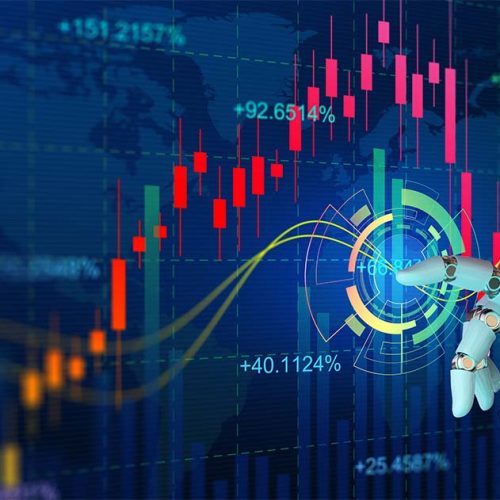AI trading has greatly changed the way the financial domain was traded before. It has innovated the methods of carrying out trading activities. Now trading is less dependent on emotions and gut feelings. People now count on historical data collected by AI trader systems to make educated decisions. As things keep fluctuating in the stock market, most traders fail to make the right choices.
The market instability causes traders to stumble upon their emotions like fear or greed. Under extreme market conditions, traders panic and tend to make hurried decisions. They sell their assets too early or keep holding them for too long eventually resulting in a loss instead of gains. AI traders do not have this problem. They work solely on genuine market data. They go through lots of historical market information to find patterns and make well-informed trading decisions.
But how do you actually train an AI trader? This process requires gathering historical stock data, preparing the data for training, selecting the right AI model, training the AI, testing its performance, and finally using it in real-world trading.
Also Read : FintechZoom Best Crypto Wallet 2025
Best Practices for Training an AI Trader with Historical Stock Data
Collecting Historical Data
Collecting historical market data is the first thing to be done while training an AI trader. The programmers need to collect data including stock prices, trading volumes, and economic indicators. It is important to have a large dataset that covers different periods. It must include market crashes, bull runs, and sideways trends. This helps the AI learn how markets behave under different conditions.
Sources To Collect Data From
There are many sources for collecting historical market data. Different platforms such as Yahoo Finance and Binance etc. allow you to approach free and paid datasets. An AI trader works better when the datasets are huge. However, raw data is messy and incomplete most of the time. It might miss values and can be uneven. Therefore, it is necessary to clean the data before using it so that we can get only exact results.
Preprocessing of Data
Data preprocessing is the removal of missing values, handling outliers, and normalizing stock prices. Stock prices show great deviations, so normalizing them helps the AI trader understand patterns more easily. Different technical indicators like Bollinger Bands, RSI, and moving averages help AI a lot in making more dependable forecasts. The quality of the training data must be good because it directly affects the AI trader’s performance. Poor data will eventually result in low-grade results while you make live trades.
Step-by-Step Guide to Using Historical Market Data for AI Trading Algorithms
Choosing the Right AI Model
After you have cleaned up your data, now you have to choose the right AI model. Every AI model cannot suit every individual’s needs. There are thousands of different models out there. Each model has its unique features. For simpler predictions, something straightforward like a decision tree or logistic regression will be best. But if you have to work in a complex and unstable stock market, you will need something more refined. For these markets, deep learning, like LSTMs or CNNs will be more suitable. These models are good for finding patterns in time-series data, which is perfect for examining market trends.
Reinforcement learning models are also famous because they learn by doing. They make mistakes and learn from the mistakes. These models try different things, see what works, and improve themselves. So, there are lots of models and you can choose what you find more useful.
Training the AI Model
After choosing a useful AI model, you now have to train it how to trade. We need to feed it with lots of old market data, stock prices, and different indicators. We show it how the market has moved in the past so it can start to identify patterns and trends. The AI makes predictions according to what it is shown. We just have to check what it does against what happens in the market. If it doesn’t work well, it’s not a big deal. It can adjust its settings and try again. Just keep repeating this process so long as the AI learns to make correct predictions.
Testing and Backtesting the AI Model
It is very important to backtest your AI trading platform’s performance. This backtesting is done by making the AI trader work on past market data. This is done to see how it will perform in the present market situation. This helps us comprehend if the AI is actually making correct predictions or if it is just imagining things. If the AI doesn’t function well during backtesting, it needs more training and adjustments.
How to Preprocess Historical Data for Training AI Stock Market Models
To train AI models for the stock market, you need to clean and organise historical data. For this, you have to collect stock prices, trading volume, and market indicators from faithful sources. Then you have to remove any missing or incorrect values and convert dates and times into a format that AI can understand. Then you will need to break the data into training and testing sets. Use feature engineering to create useful inputs like moving averages or volatility measures. It is also important to remove unnecessary data to improve the effectiveness of the training model.
Before using an AI trader in live markets, it is wise to test it in a risk-free environment. Paper trading is a good way to test an AI trader’s performance. Using this technique, AI makes fake trades without actually using any money. This way you can observe how the AI trader will perform in real-time market conditions without any loss. If the AI performs well in paper trading, it can be used to make real trades with small investments.
Final Thoughts
Using historical market data to train an AI trader is a difficult but valuable task. It requires thorough preparation, from collecting and preparing data to choosing and training the best AI model. It is important to train AI traders on high-quality data and update it many times to make it work according to moving market conditions. It is necessary to ensure its effectiveness.
Among the many benefits of AI trading is its ability to improve trading regularity and stop emotional decision-making. But it’s not an assured way to turn a profit. Traders should use an AI trader with some sound risk management techniques. This will reduce losses better and increase profits. AI-powered trading bots will progress even more in the coming years.
Follow the best practices for training AI traders to take good advantage of this technology. It will help you make better investment decisions enabling you to trade the financial markets more successfully.





